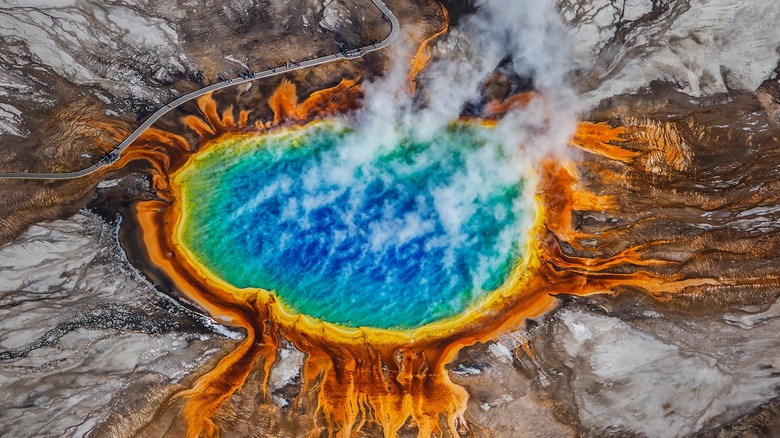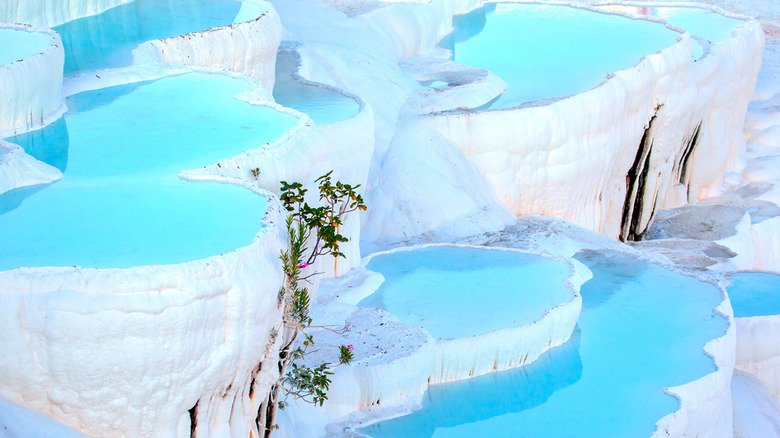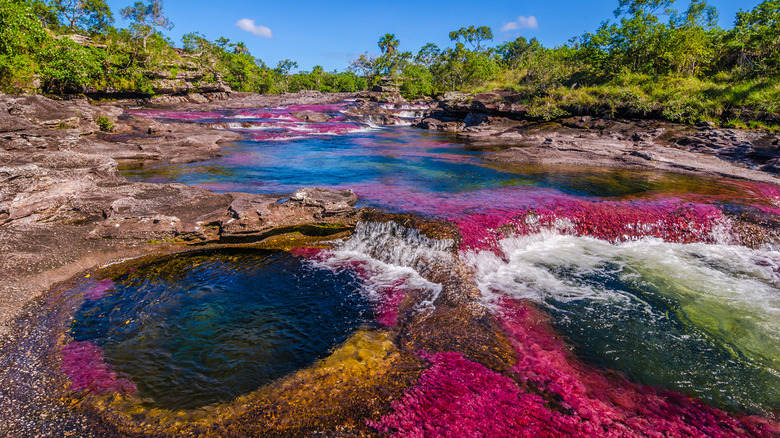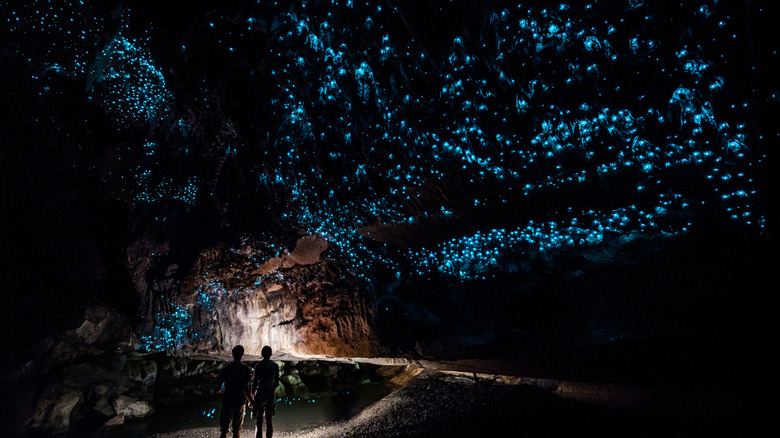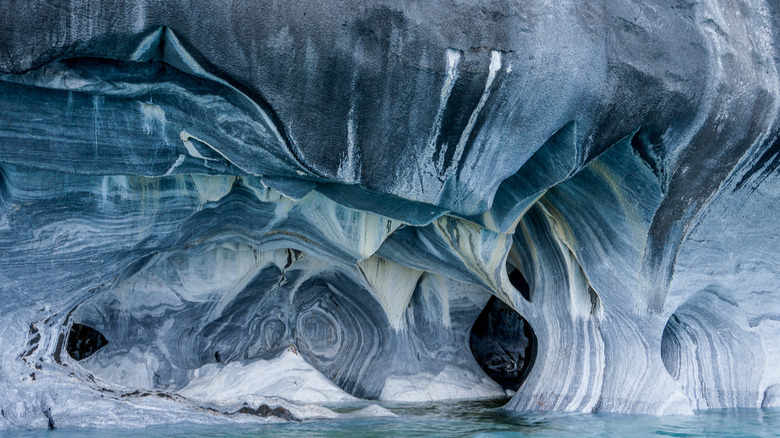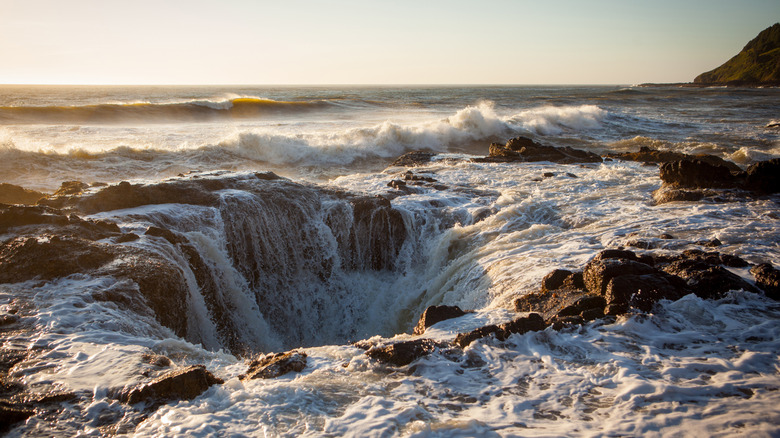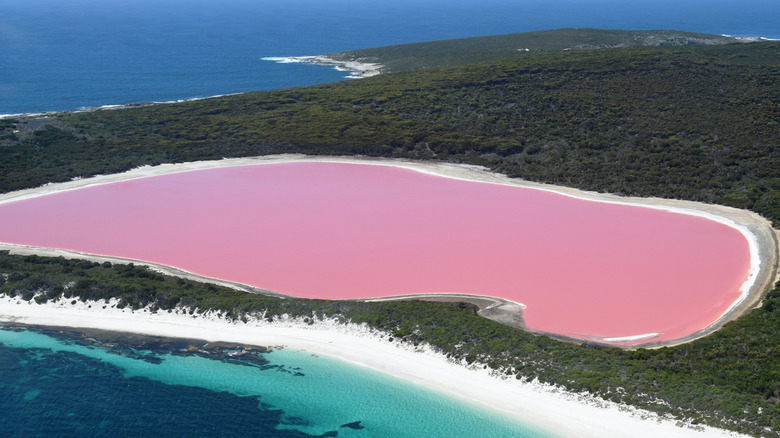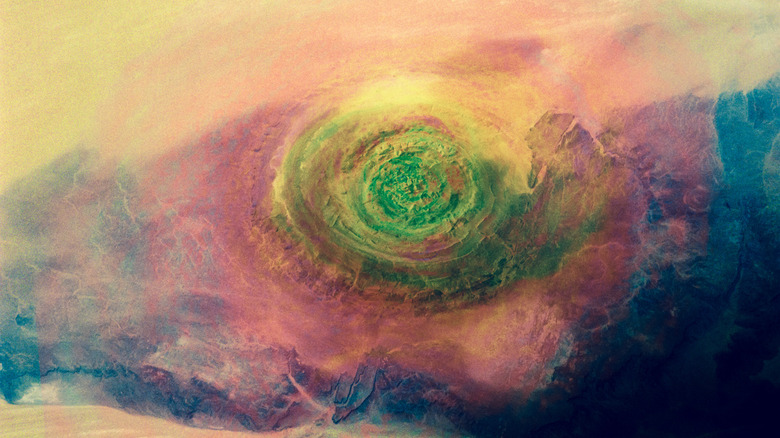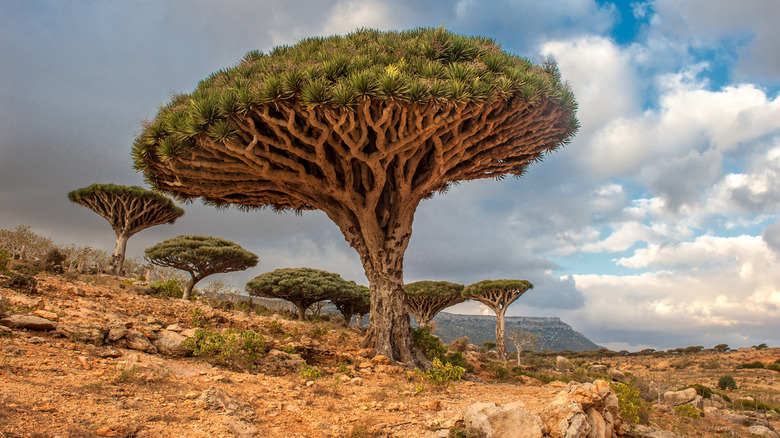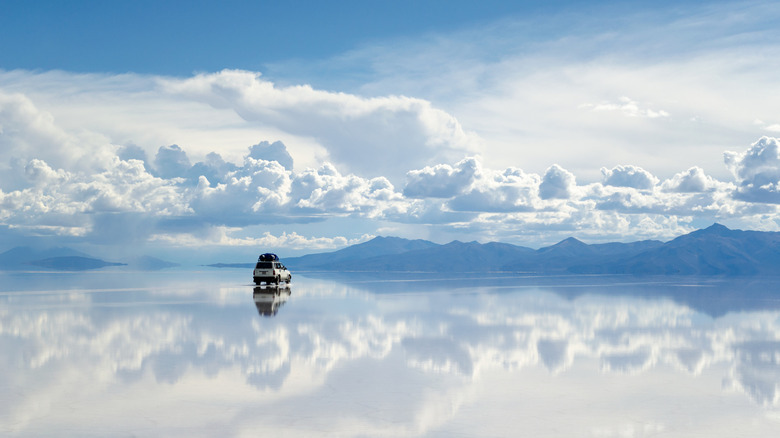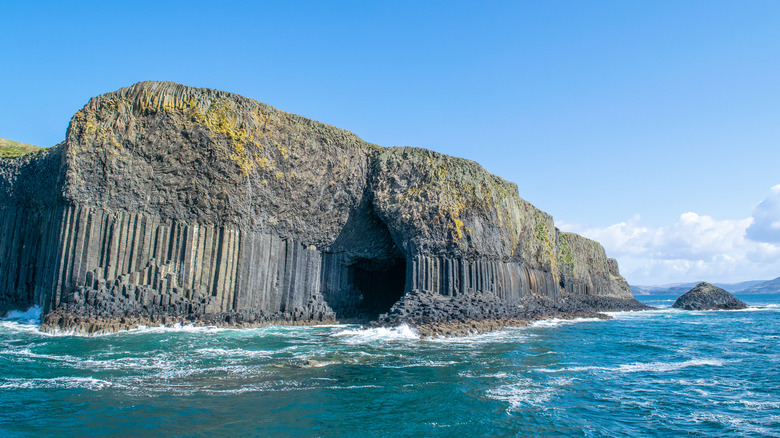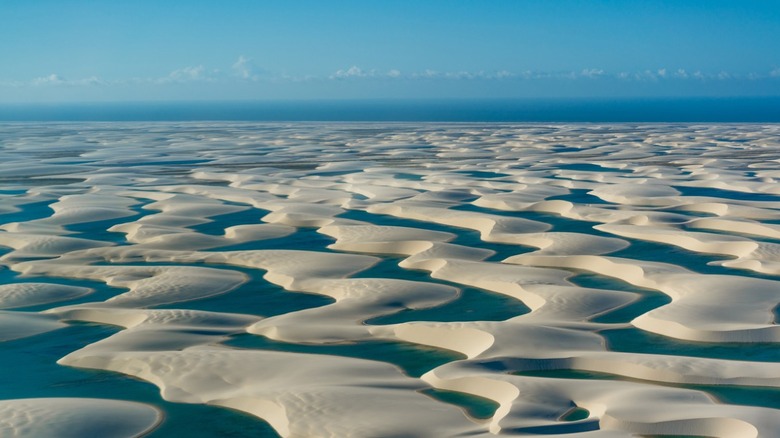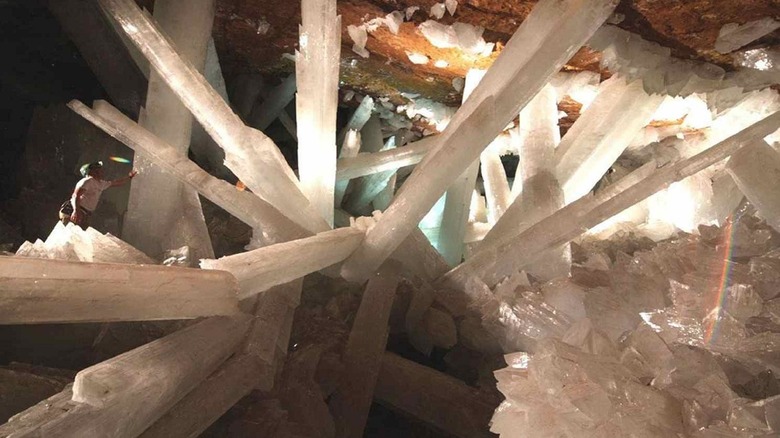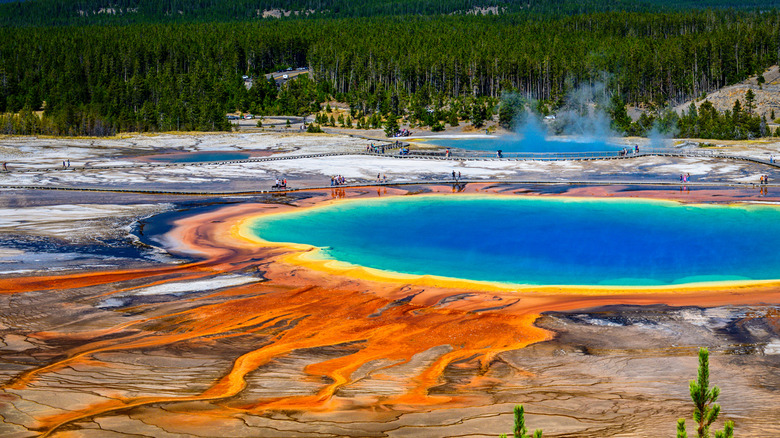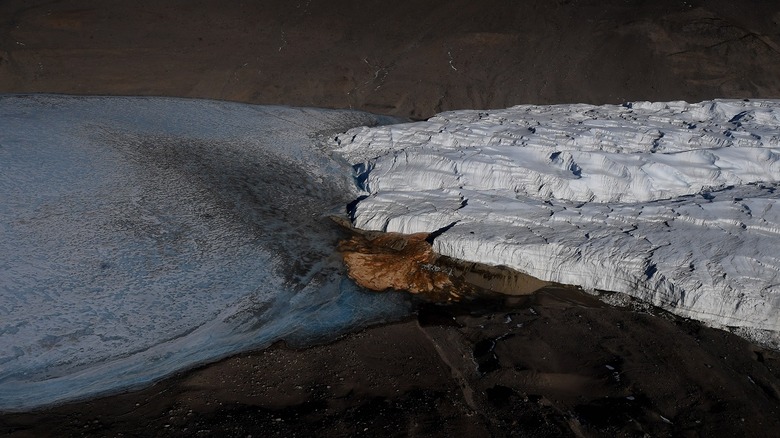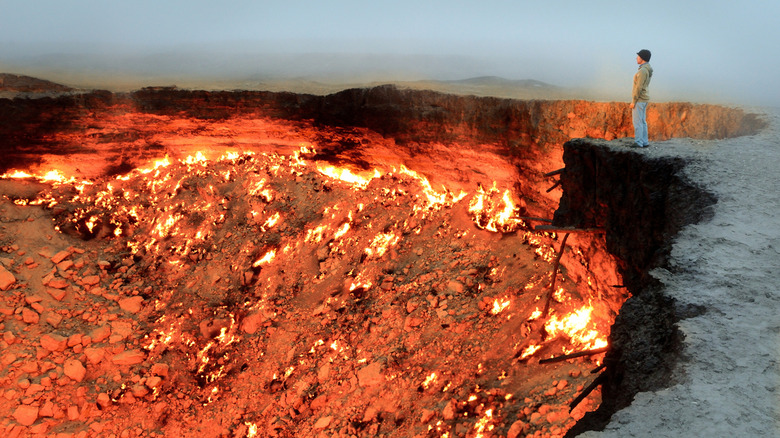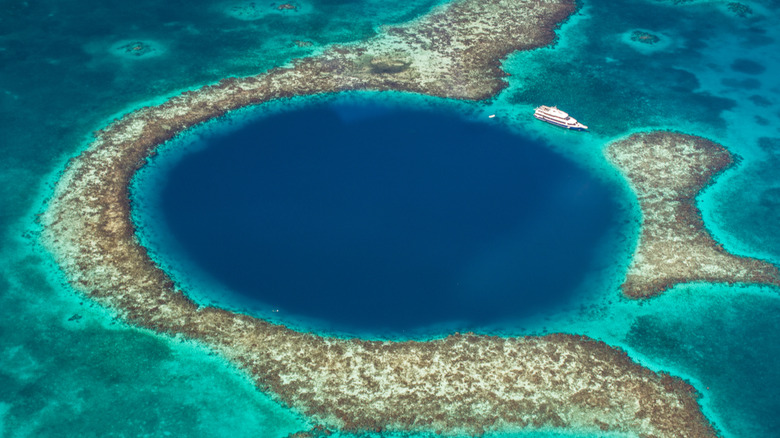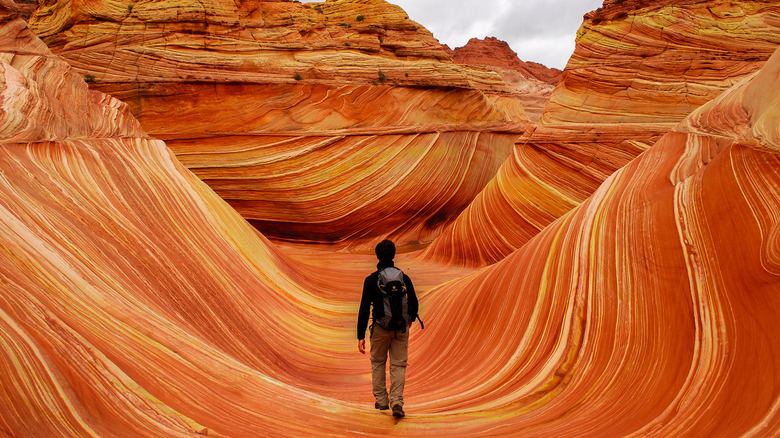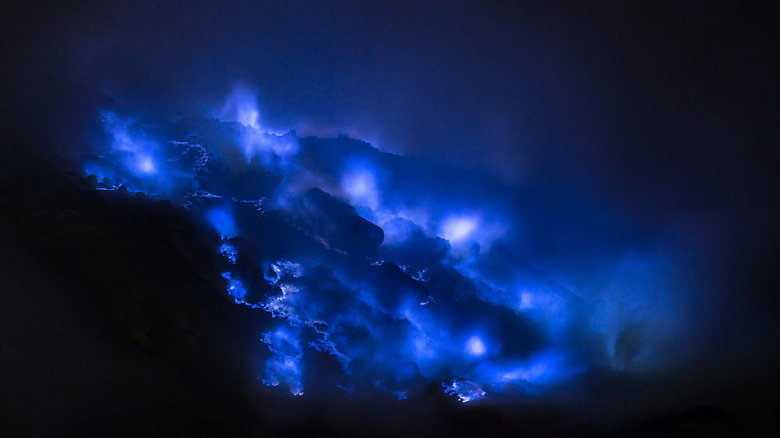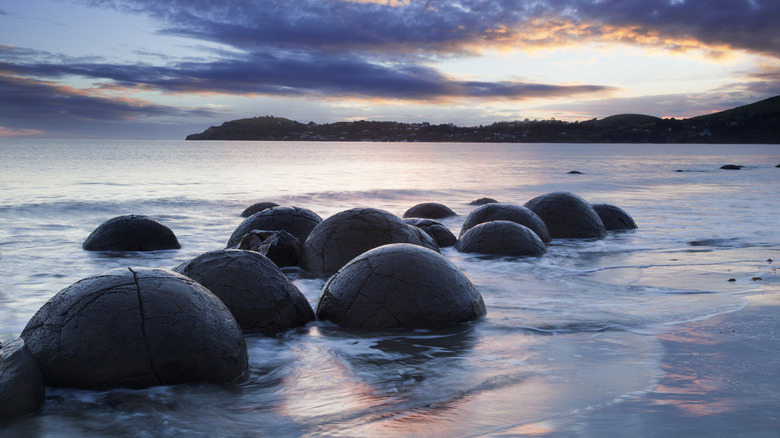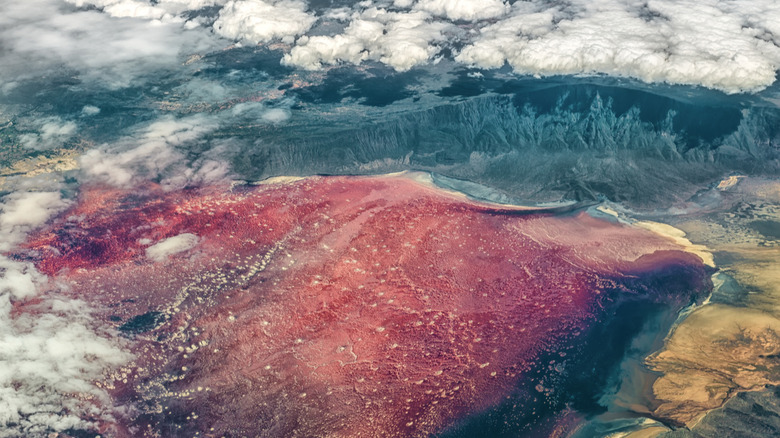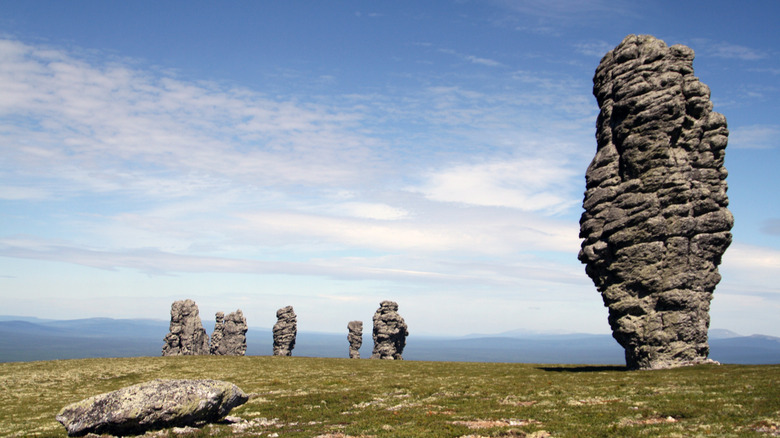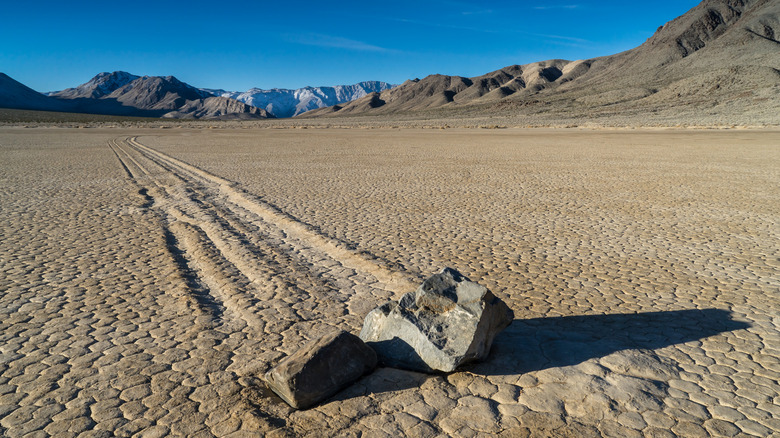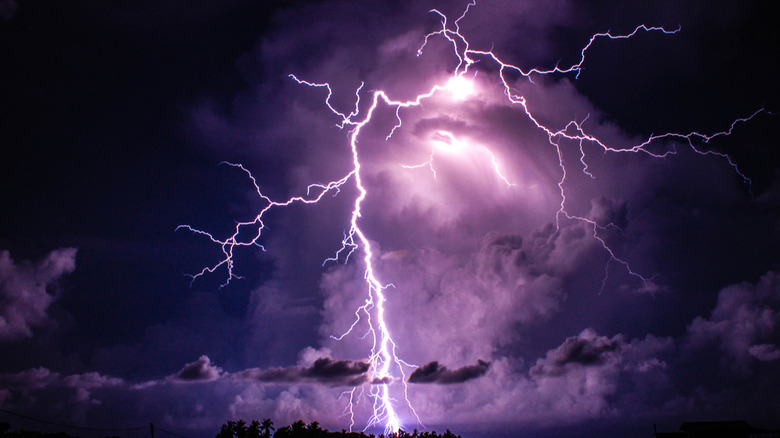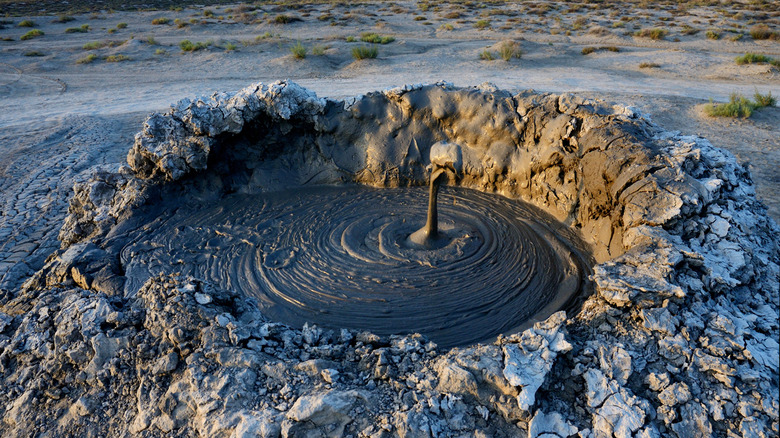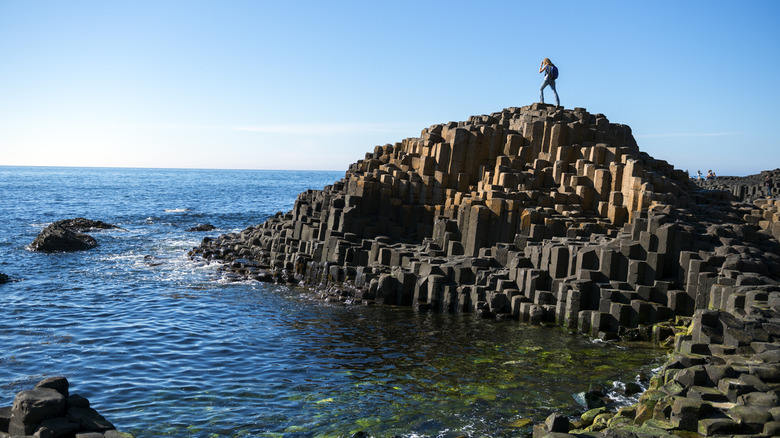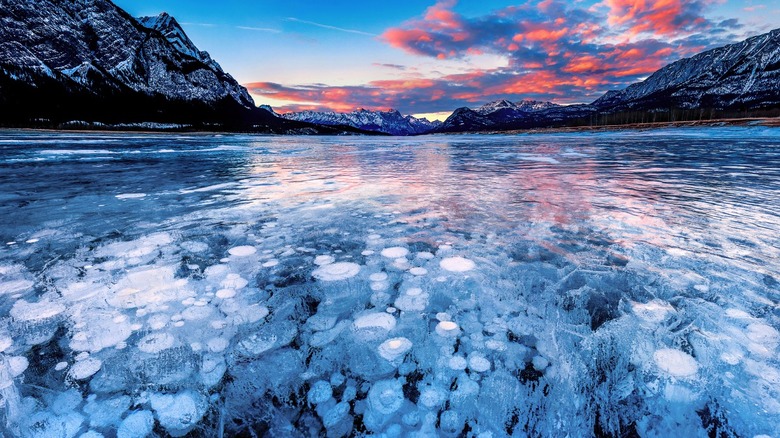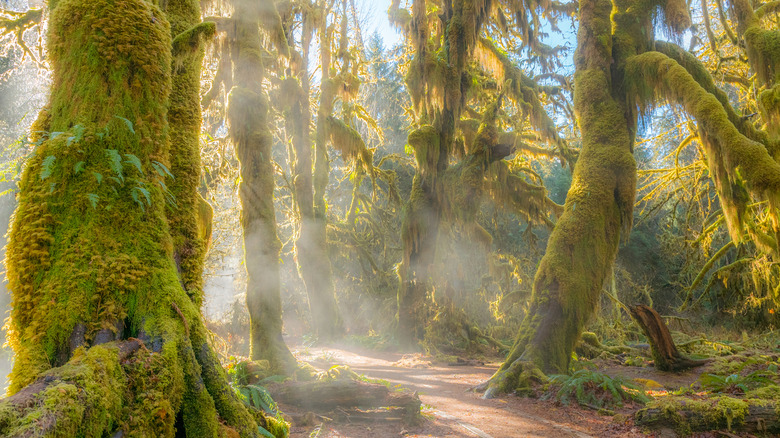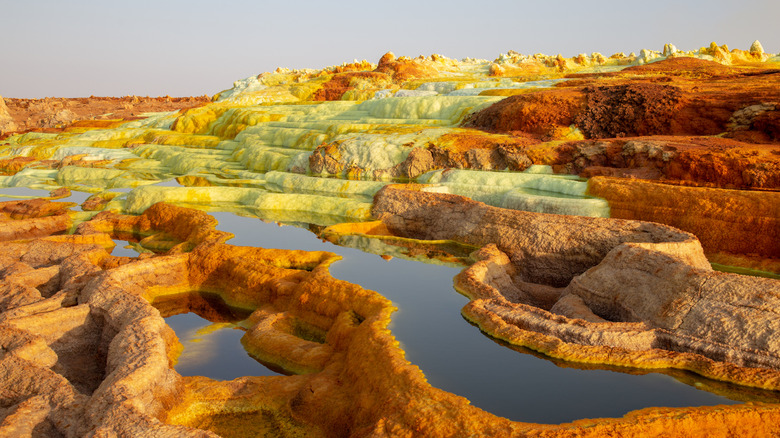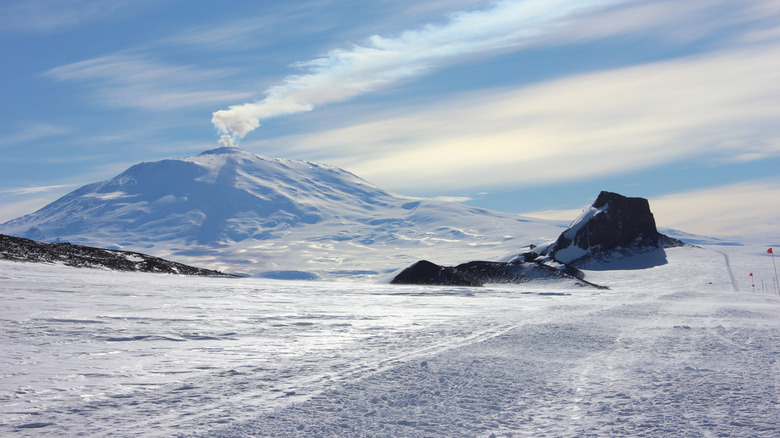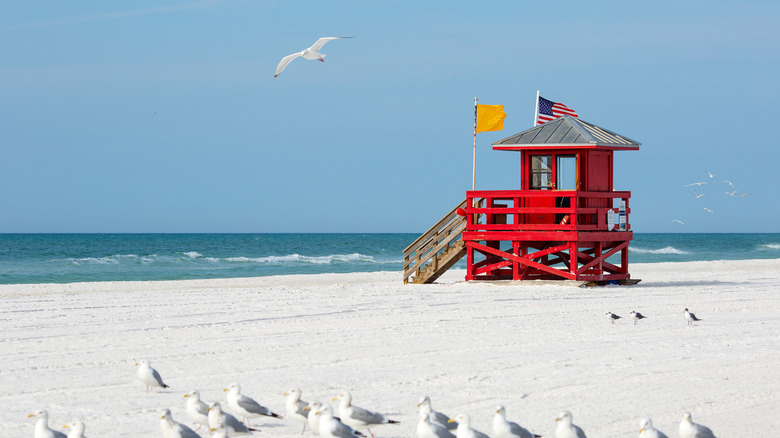The World's Strangest Natural Wonders
Scenic beauty draws tourists to and from all corners of the world, and some of the most stunning sites of all don't even look like they belong on this planet. These natural wonders are fascinating and beautiful in their strangeness and distinctive features.
Thermal pools at Pamukkale (Turkey)
Taking a dip in the thermal waters of Pamukkale in southwestern Turkey is an experience every American should have abroad, and it's been a tradition since the Romans built the city of Hierapolis here at the end of the second century B.C. Hot water filled with calcite flows over cliffs about 650 feet high, turning into pools and petrified waterfalls with a mesmerizing white coating that gives Pamukkale (Turkish for "cotton castle") its name.
Caño Cristales (Colombia)
Caño Cristales is a beautiful river where the red Macarenia clavigera plants add blue, green, yellow and black colors to its rapids, waterfalls and tidepools when the sunlight hits a certain way. Less than 65 miles long and only up to 13 miles wide at any point along the way, the colorful river flows through the Macarena mountain range of central Colombia and one notable stop is the Piscina de los Turistas (Tourist Pool) where people can stop to take photos or go for a scenic swim.
Glowworms at Waitomo Caves (New Zealand)
Considering New Zealand's plethora of natural scenery and fascinating wildlife, it's no wonder the island nation was one of the trendiest destinations of the 2010s. Glowworms can be found throughout New Zealand, particularly in forests and on the banks of lakes and rivers, but a night ride by bike, boat or kayak through the Waitomo Caves is a great way to catch the mesmerizing show of thousands of blue-green lights emitted by these tiny insects.
Marble Caves (Chile)
The Marble Caves, or Capillas de Mármol as they're called in Spanish, are a series of cave formations located in a lake in Chilean Patagonia. The black and white caves are made up of three formations called the Cathedral, the Cave and the Chapel, all of which make a stunning contrast with the surrounding blue waters.
Thor's Well (Oregon)
A spot that typically only West Coasters know about, Thor's Well is a 20-foot-deep hole that essentially functions as a saltwater fountain on the edge of the Cape Perpetua coast. To see it in full force, one has to visit between an hour before and an hour after the high tide, when the hole is repeatedly filled by the waves until water bubbles or sprays out from the top.
Lake Hillier (Australia)
One of multiple pink lakes in Australia, Lake Hillier is located on the Recherche Archipelago off the southern coast of Western Australia. The bright pink lake is surrounded by a verdant forest along the coast of the dark blue Indian Ocean, making for a striking contrast when flying overhead.
Richat Structure (Mauritania)
Also known as the Eye of the Sahara, the Richat Structure in the Sahara Desert has long puzzled geologists who largely believe the structure was caused by an uplifted dome that was eroded, exposing ringed layers of flat rock, with the oldest in the center. The geologic feature is made up of sedimentary and igneous rocks and measures 28 miles across.
Dragon's blood trees of Socotra (Yemen)
Only found on the Yemeni island of Socotra, the dragon's blood tree is so-named for its red resin, used for folk medicinal purposes. The species has become something of a bizarre attraction, dating back to prehistoric times and is notable for its green umbrella-shaped canopy sitting atop bare, rippled-looking branches.
Salar de Uyuni (Bolivia)
Salar de Uyuni is a surreal sight, seeming as though it goes on forever. Indeed, this mesmerizing place is the largest salt flat in the world and so flat that, when it rains, the water turns it into a huge mirror.
Fingal's Cave (Scotland)
Formed by hexagonal columns of volcanic basalt about 60 million years ago, Fingal's Cave is a picturesque spot in the Scottish Isles that stands more than 200 feet tall. When the ocean's waves smash against the columns, the cave's arched roof transforms the sound into a loud harmony, making the experience all the more awe-inspiring.
Lençóis Maranhenses National Park (Brazil)
The largest field of sand dunes in South America, Lençóis Maranhenses National Park is on the northeastern coast of Brazil, with about 50 miles of beautiful coastline featuring dunes as high as 65 feet. In addition to its beaches, the park also has bright blue and green freshwater lagoons that have formed among the dunes, making for an otherworldly sight.
Cave of the Crystals (Mexico)
The sparkling gypsum crystals growing in a cave connected to the Naica mine in Chihuahua, Mexico, grow as long as 36 feet. Known as Cave of the Crystals, the spot is estimated to have had crystals growing for approximately 1 million years.
Grand Prismatic Spring (Wyoming)
Located in Yellowstone National Park, Grand Prismatic Spring is one of the most beautiful spots in America's many national parks. About 370 feet wide and with water shooting up from a 121-foot-deep crack, it is the third-largest spring in the world and, thanks to various species of bacteria, its deep blue waters are surrounded by successive bright green, yellow and orange bands of water.
Blood Falls (Antarctica)
Ferrous hydroxide, a salt with iron, seeping out of a glacier and into Lake Bonney makes it look as though the glacier is bleeding, an effect that's like something out of a haunted house.
Door to Hell (Derweze, Turkmenistan)
A giant gas crater was created by a Soviet drilling rig hitting an underground cavern near the Turkmenistan village of Derweze in 1971, causing it to collapse. The Gates of Hell is one of the most terrifying places on the planet. When the cavern collapsed, it turned into a toxic-gas-emitting pit more than 300 feet wide. The gases were ignited in order to contain them with the expectation that the fire would last only for a few days, but it continues to burn to this day.
Great Blue Hole (Belize)
Within the blue-green waters of Belize, there's a spot that's suddenly a deep (literally), dark blue known as the Great Blue Hole that's actually a vertical cave. The hole runs 400 feet deep and 1,000 feet across, and is a popular diving site.
The Wave (Arizona)
Arizona is home to much scenic beauty, and one of its top natural wonders is the Wave, a mesmerizing formation of wind-deposited Navajo sandstone that formed over a span of more than 100 million years, resulting in swirls of reds, oranges, yellows, browns and purples. It's located in the Coyote Buttes in the northern part of the state, and only 20 people are allowed to visit every day, requiring either a walk-in permit obtained the day before or by applying for one in advance via lottery.
Blue lava of Kawah Ijen Volcano (Indonesia)
The largest acidic lake in the world lies in the crater at the top of the Kawah Ijen volcano in East Java, Indonesia, a destination that's known more for its tropical beauty than for its volcanic activity. A beautiful turquoise during the day, the sulfur in the crater turns out blue flames at night.
Moeraki Boulders (New Zealand)
Exactly how the Moeraki Boulders formed remains a mystery, but scientists have found that they are made up of calcite and probably appeared about 65 million years ago. About 6 to 7 feet high and weighing several tons, they're a great photo stop along the North Otago Coast in the southern part of New Zealand's South Island.
Lake Natron (Tanzania)
The bright red Lake Natron is the most caustic body of water on Earth, getting its color due to the microorganisms attracted to its salt crust, which turn it pink and red, making it a chilling sight. It is also an important breeding site for Lesser flamingos, which get their pink and red-tinged color from the blue-green Spirulina algae, which has red pigments and feeds the birds.
Manpupuner Rock Formations (Russia)
Seven strange rocks make up the Manpupuner Rock Formations in northwestern Russia, out in the middle of nowhere more than 60 miles away from any civilization. Each rock has a curious shape and is as high as a building that's 10 to 15 stories tall, and there's no consensus as to where they came from.
Sailing stones in Death Valley (California)
Within Death Valley National Park, one of the most popular American tourist destinations, lies a dry lakebed known as Racetrack Playa, where dolomite and syenite rocks with tracks behind them long gave the impression that the "sailing stones" were moving on their own. Using time-lapse photography, however, scientists in 2014 finally figured out that water, wind and ice had been the cause for the phenomenon.
Catatumbo lightning (Venezuela)
The highest concentration of lightning on earth is on Venezuela's Lake Maracaibo where it meets with the Catatumbo River. Known as the Catatumbo lightning, the phenomenon occurs in the form of about 233 flashes per square kilometer per year.
Mud volcanoes (Azerbaijan)
Believe it or not, there are actual volcanoes erupting with mud rather than lava. Out of the 800 known mud volcanoes in the world, 350 are in Azerbaijan, many of which are considered natural monuments of the country.
Giant's Causeway (Northern Ireland)
One of the most magical spots in Ireland, Giant's Causeway is a UNESCO World Heritage Site made up of about 40,000 interlocking hexagonal basalt columns. Its name comes from a local legend that says the causeway was built by a giant, and science shows it was formed about 60 million years ago.
Methane bubbles of Abraham Lake (Canada)
Frozen bubbles of methane, the result of decomposing organic matter at the bottom of the lake, dot the surface of the frozen Abraham Lake.
Hoh Rainforest (Washington State)
The Olympic Peninsula's Hoh Rainforest gets 140 to 170 inches of rain annually and the distinctive look of its green moss and lichen-covered trees give it an enchanting, ethereal appearance. There are also 88 camping sites on its grounds.
Danakil Depression (Ethiopia)
As a result of continental rifting, or the geological phenomenon in which the earth is literally pulling apart, the Danakil Depression exhibits multiple strange phenomena. In addition to bubbling mud lakes, the hot springs at this eastern African spot are bright yellow and the lava is blue.
Smoking chimneys at Mount Erebus (Antarctica)
Antarctica is actually home to quite a few active volcanoes, including Mount Erebus, thought to be the southernmost in the world. A lava lake exists in the crater of the summit, but what's most unusual and awe-inspiring are the nearly 100-foot-tall ice towers that vent gases and steam.
Pure quartz sand at Siesta Beach (Siesta Key, Florida)
The sand at the beach in Siesta Key is both fine and cool to the touch, due to the fact that it's made up of 99% quartz. It makes for a stunning sight, especially when juxtaposed with aquamarine waters and brightly colored lifeguard huts at one of the world's best beaches.
